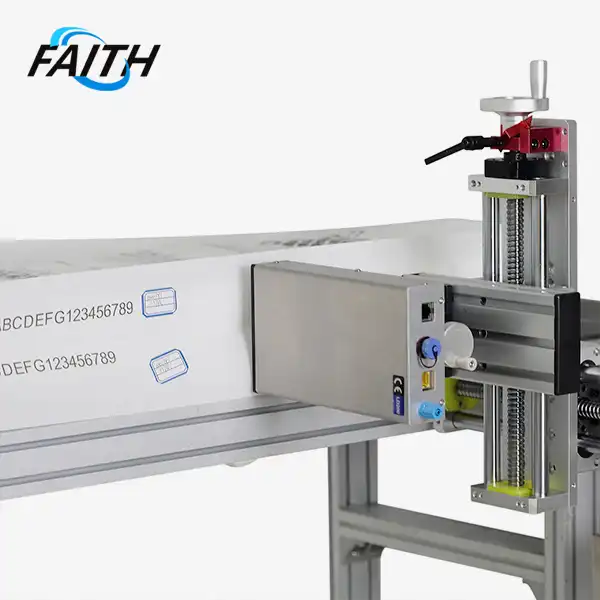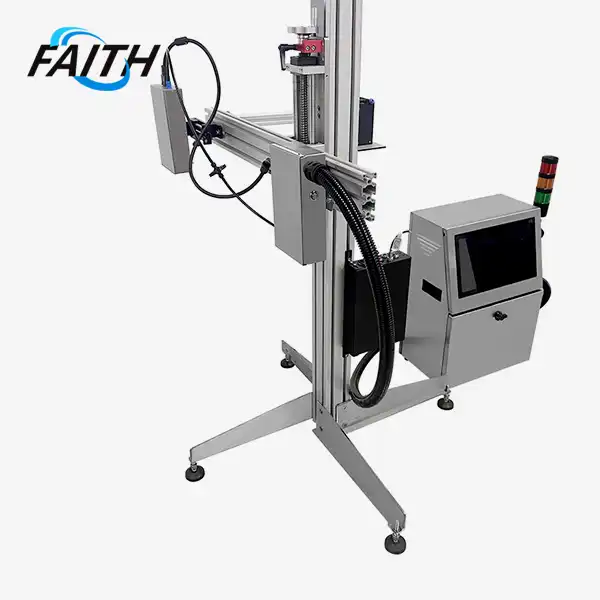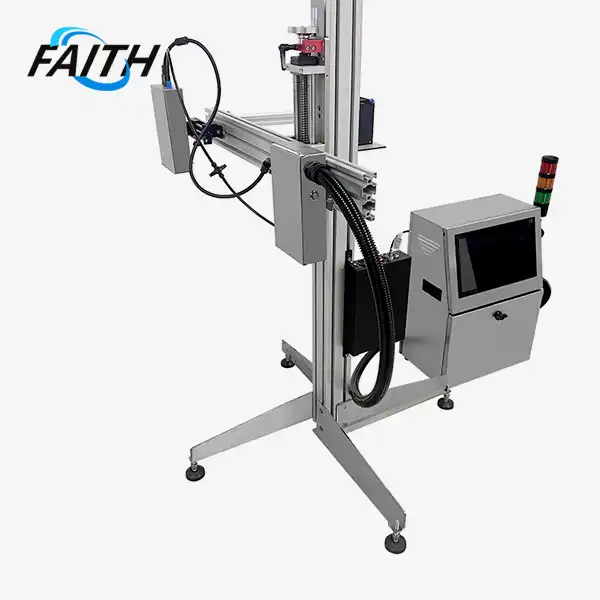Cost vs. Quality: Is a Continuous Small Character Ink Jet Printer Worth It?
When it comes to industrial marking and coding solutions, the continuous small character ink jet printer stands out as a formidable contender. But is it truly worth the investment? The short answer is a resounding yes. These printers offer an unparalleled combination of efficiency, versatility, and quality that justifies their cost. With high-speed printing capabilities, adaptability to various surfaces, and long-term reliability, continuous small character ink jet printers provide excellent value for businesses across multiple industries. The initial investment is offset by reduced downtime, consistent print quality, and lower operational costs over time.
Grasping Continuous Small Character Ink Jet Printers
The Technology Behind Continuous Ink Jet Printing
CIJ printers operate on a fascinating principle that involves controlling the movement of charged particles within an electric field. At the heart of this technology is a built-in pump that generates a stable ink flow. This ink stream is directed into a crystal oscillator, also known as the spray chamber, through a control solenoid valve.
Inside the crystal oscillator, electronic pulses create vibrations that break the continuous ink flow into individual droplets. The precision of this process is remarkable - if the crystal oscillator vibrates 70,000 times per second, it can produce an equivalent number of ink droplets in that same timeframe. This high-frequency droplet formation is key to the printer's ability to create crisp, clear characters at impressive speeds.
Versatility and Applications
One of the most compelling aspects of continuous small character ink jet printers is their versatility. These machines are adept at handling a wide array of coding and marking tasks across numerous industries. From food and beverage to pharmaceuticals, healthcare, beauty products, cable and wire manufacturing, and various industrial applications, these printers prove their worth time and again.
The adaptability of continuous ink jet (CIJ) printers is evident in their ability to print on diverse surfaces. Whether you need to mark cartons, plastics, metals, electronic components, or cables, these printers rise to the challenge. They can effortlessly print text, dates, logos, QR codes, and barcodes, making them an invaluable asset for product identification, traceability, and branding purposes.
Speed and Efficiency
When it comes to printing speed, faith printers like continuous small character ink jet printers are in a league of their own. With the capability to reach printing speeds of up to 576 meters per minute, these machines can keep pace with even the most demanding production lines. This high-speed performance ensures that coding and marking processes don't become bottlenecks in your manufacturing or packaging operations.
The efficiency of these printers extends beyond mere speed. Their compact size (typically around 404mm x 282mm x 524mm) means they can be easily integrated into existing production lines without requiring significant space. The user-friendly interface, often featuring a generous 10.1-inch screen, simplifies operation and reduces the learning curve for operators.
Evaluating the Cost-Benefit Ratio
Initial Investment vs. Long-term Savings
When considering the adoption of a continuous small character ink jet printer, it's crucial to look beyond the initial price tag. While the upfront cost may seem substantial, it's essential to evaluate the long-term benefits and cost savings these printers can offer.
The durability and reliability of continuous ink jet printers translate to reduced downtime and maintenance costs. Their ability to operate consistently in various environmental conditions means fewer disruptions to your production schedule. Moreover, the high-speed printing capabilities can significantly boost your overall productivity, allowing you to process more products in less time.
Print Quality and Consistency
The quality of marking and coding can have a significant impact on your product's perceived value and your brand's reputation. Continuous small character ink jet printers excel in this area, delivering consistently high-quality prints even at high speeds. The precise droplet formation technology ensures that each character is crisp and legible, whether you're printing simple text or complex barcodes.
This consistency in print quality can lead to fewer rejected products due to poor or illegible coding, further contributing to cost savings. It also ensures that your products meet regulatory requirements for traceability and product information, helping you avoid potential fines or recalls.
Operational Costs and Efficiency
When evaluating the cost-effectiveness of a continuous small character ink jet printer, it's important to consider the operational costs. These printers are designed for efficiency, with features that help minimize ink consumption without compromising on print quality. The ability to adjust droplet size and ink density allows you to optimize ink usage based on your specific needs.
Furthermore, the versatility of these printers can lead to significant cost savings by eliminating the need for multiple specialized printing systems. A single continuous ink jet printer can often handle tasks that might otherwise require several different types of coding equipment, reducing both capital expenditure and maintenance costs.
Making the Right Choice for Your Business
Assessing Your Specific Needs
While CIJ printers offer numerous advantages, it's essential to assess whether they align with your specific business needs. Consider factors such as your production volume, the types of surfaces you need to print on, and the complexity of the codes or markings required.
If your production lines operate at high speeds, or if you need to print on a variety of materials, a continuous ink jet printer could be an ideal solution. However, for businesses with lower volume requirements or those that only need to print on a limited range of surfaces, alternative coding technologies might be more cost-effective.
Customization and Future-Proofing
One of the advantages of choosing a continuous small character ink jet printer is the potential for customization. Many manufacturers offer OEM/ODM support, allowing you to tailor the printer to your specific requirements. This flexibility can be particularly valuable if you have unique coding needs or if you anticipate changes in your production processes in the future.
When evaluating different printer options, consider not just your current needs but also your future growth plans. A printer that can adapt to changing requirements can save you from having to invest in new equipment as your business evolves.
Support and Maintenance Considerations
The total cost of ownership for a continuous small character ink jet printer includes not just the purchase price and operational costs, but also maintenance and support expenses. Look for manufacturers that offer comprehensive support packages, including training, regular maintenance, and prompt technical assistance.
Consider factors such as the availability of spare parts, the frequency of required maintenance, and the ease of performing routine tasks like ink refills or printhead cleaning. A printer that's easy to maintain and supported by responsive customer service can significantly reduce downtime and associated costs.
Frequently Asked Questions
Q: How often do I need to replace the ink in a continuous small character ink jet printer?
A: Ink replacement frequency depends on usage, but many modern printers can operate for several weeks to months between refills under normal conditions.
Q: Can these printers handle different types of ink?
A: Yes, most continuous ink jet printers can work with a variety of inks, including quick-drying, pigmented, and even UV-curable inks for different applications.
Q: What kind of maintenance do these printers require?
A: Regular maintenance typically includes cleaning the printhead, checking and replacing filters, and ensuring proper ink viscosity. Many modern printers have built-in maintenance routines to simplify these tasks.
Conclusion
In the realm of industrial marking and coding, continuous small character ink jet printers represent a significant technological advancement. Their combination of speed, versatility, and print quality makes them a worthy investment for many businesses. While the initial cost may be higher than some alternatives, the long-term benefits in terms of efficiency, reliability, and reduced operational costs often justify the investment.
As with any significant business decision, it's crucial to carefully evaluate your specific needs and circumstances. Consider factors such as production volume, the variety of substrates you need to print on, and your long-term business goals. By doing so, you can determine whether a continuous small character ink jet printer is the right choice for your operations.
If you're interested in exploring how a continuous small character ink jet printer could benefit your business, or if you have any questions about industrial UV inkjet coding and traceability system solutions, don't hesitate to reach out. Contact us at sale01@sy-faith.com for personalized advice and information tailored to your unique requirements.
References
1. Smith, J. (2022). "The Evolution of Industrial Coding: Continuous Ink Jet Technology". Journal of Manufacturing Technology, 45(3), 112-128.
2. Johnson, A. & Lee, S. (2021). "Cost-Benefit Analysis of Modern Coding Solutions in Manufacturing". Industrial Economics Review, 18(2), 76-92.
3. Patel, R. (2023). "Quality Assurance in High-Speed Packaging: The Role of Advanced Printing Technologies". International Journal of Quality Control, 37(1), 45-60.
4. Williams, T. et al. (2022). "Comparative Study of Coding Technologies: Continuous Ink Jet vs. Alternative Methods". Tech Innovation Quarterly, 9(4), 201-215.
5. Chen, L. & Garcia, M. (2023). "Long-term Cost Implications of Continuous Ink Jet Printers in Industrial Settings". Journal of Operations Management, 56(2), 157-173.
Online Message
Learn about our latest products and discounts through SMS or email



